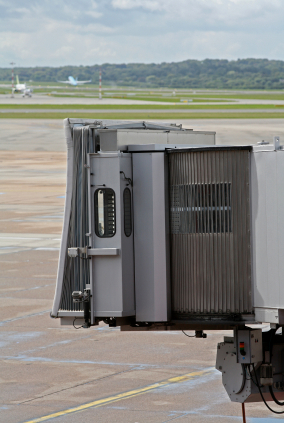- August 1, 2013
- Posted by: Hillary Feder
- Category: Employee Engagement
Real-Life Payoffs with Engagement in Action
Talking about engagement—why it is important and what to do to make it happen—feels somewhat pedantic. But when you see it happen in real life, it truly is a beautiful thing—particularly in an industry that often appears to be thoughtless and treats customers as transactions. Travelers are at the mercy of the airlines, praying to arrive at their destination without incident—on time, safely, with luggage waiting at arrival. If an engaged airline crew succeeds (as you will learn), your crew can, too.
The Story
I arrived at my gate 75 minutes before scheduled departure. As departure time neared, the waiting area swelled with families eager to begin their vacation, weary business people looking forward to arriving home for the weekend, and individuals, young and old.

A number of concerned travelers began approaching the desk to seek help with transfers to other flights/airlines in order to make their connections. The gate agent took their information and apologized to each traveler, acknowledging she and her crew were doing all they could to get us in the air.
About 10 minutes later a very apologetic gate agent told us there would be a gate change and our aircraft would be ready to take off as soon as everyone could move to the new gate and board the plane. The gate change required a mass migration to the other end of the airport (Terminals D and G are at opposite ends of MSP airport.). The agent added that personnel were on call to help expedite the move. A few elderly and families traveling with young children/infants accepted her offer.
Upon arrival at the new departure gate, a different agent greeted us and offered snacks and beverages and profusely apologized for the inconvenience. This isn’t the airline I’m used to flying! And from comments I overheard from my travel companions, they appreciated this very different approach to handling the problem. While we didn’t get to our destination on time, this new attitude helped us exhale and make the best of it.
Once airborne, the pilot acknowledged there were 28 passengers with tight connections. He and his crew were doing all they could to make up time and communicate with LaGuardia airport to help these passengers make tight connections on what would probably be the last flight of the day to their destination cities.
About 20 minutes from landing, the pilot announced that communication had been established with all flight crews/airlines for the 28 passengers with these tight connections, and flights were being held. He relayed which gate we would be deplaning at, the specific gate for every connection, and explained that terminal personnel would be there to transport passengers whose flights were leaving from a different terminal. The pilot asked all passengers who were not taking connecting flights to remain seated until those that were connecting could debark.
Minutes before landing, the pilot announced that there were four passengers with the tightest connections, so the plane was going to land at the terminal where they needed to be and personnel would be there to transport the other 24 to their respective terminals.

Here’s what happened because ground and flight crews (pilots and flight attendants), general airport personnel, and the other airlines affected by delayed passengers collaborate and communicate frequently and clearly with passengers:
- The cost savings of hotel and ground transportation for 28 people that could have missed their flights (estimated at: $7000* based on Marriott Courtyard listed rate of $249/night); delays caused by mechanical failure are the responsibility of the airline if delayed passengers miss connecting flights.
- Priceless good will; passengers will relay a surprisingly (in a good way) unusual flight experience.
Undoubtedly a bright spot among travel experiences, here was a group working together for the greater good. I understand that anger and disappointment among travelers are inherent in a flight delay, but negativity was mitigated.
The Moral: connection between engagement and customer satisfaction
According to a recent study by Avatar Solutions (an organization specializing in employee engagement surveys), there is a strong correlation between customer satisfaction surveys and employee engagement surveys. In a service-based economy, customer satisfaction is going to drive revenue. A critical success factor is empowered employees who make decisions and problem-solve to improve the customer’s experience. In this example, collaboration among empowered employees drove success.
As a professional observer, I was curious to see if and how the airline fostered engagement that might be driving a change in employee behavior. So a website visit and review of their Rules of the Road revealed that in fact their employees brought to life many of the airline’s core values and principles in this experience:
- Always tell the truth (Honesty)
- Care for our customers, our community and each other (Servant Leadership)
- Listen closely and communicate openly, honestly and directly
- Encourage change and innovation
- Promote broad employee involvement
- Set clear roles, responsibilities and expectations
- Demand and accept responsibility
- Have employees who are motivated every day to serve our customers and exceed their expectations
- Know our customers and care for them
- Connect with our customers—superior customer service and relationships can be a strategic advantage that allows us to beat our competitors.
Engagement in action is critical for employee performance, customer retention and bottom line results. We’ll help you implement down-to-earth strategies that are aligned with your company objectives, brand, message and voice. Call us.
Toll free: 800-742-6800 In Minneapolis/St. Paul 952-933-8365 www.askhillarys.com
